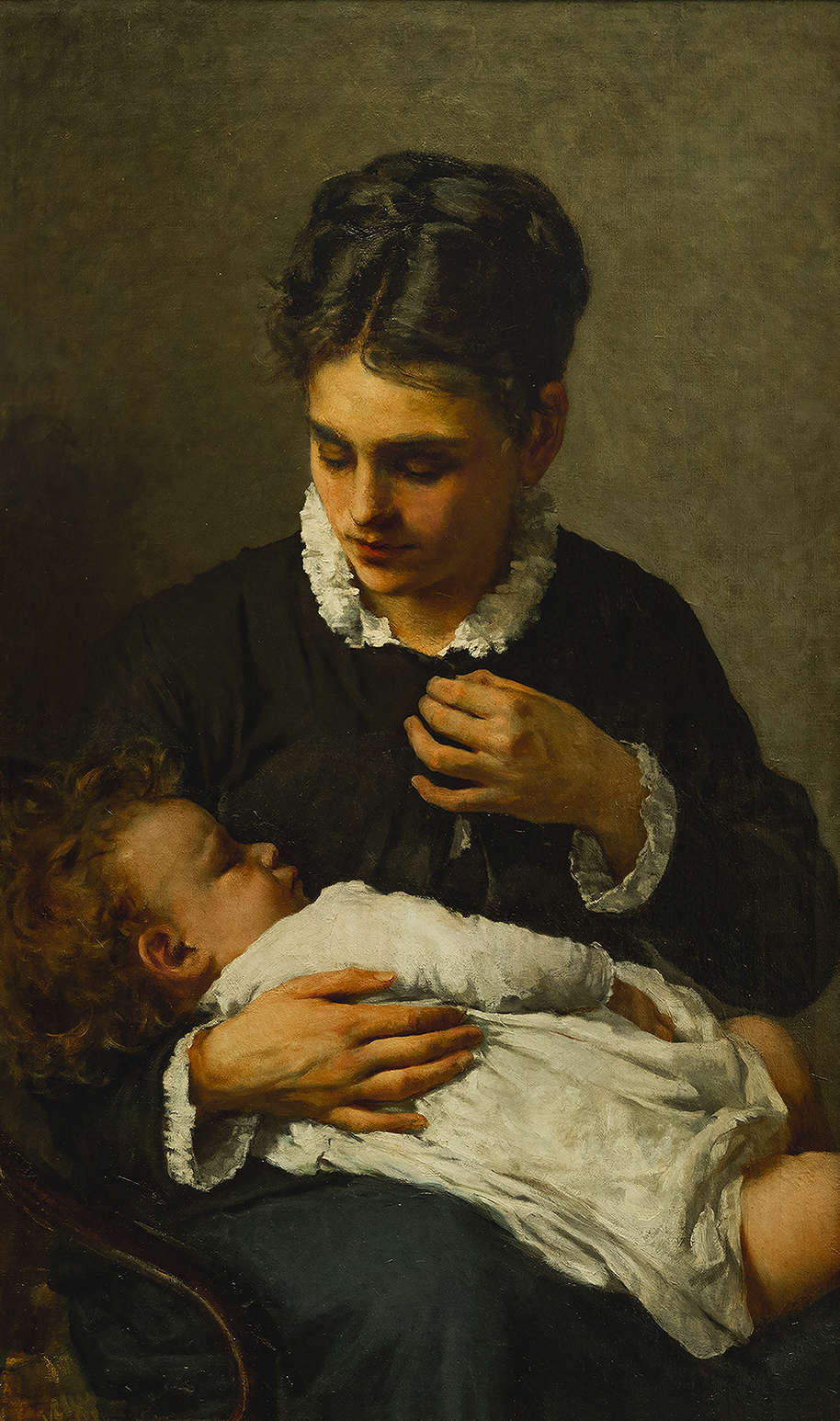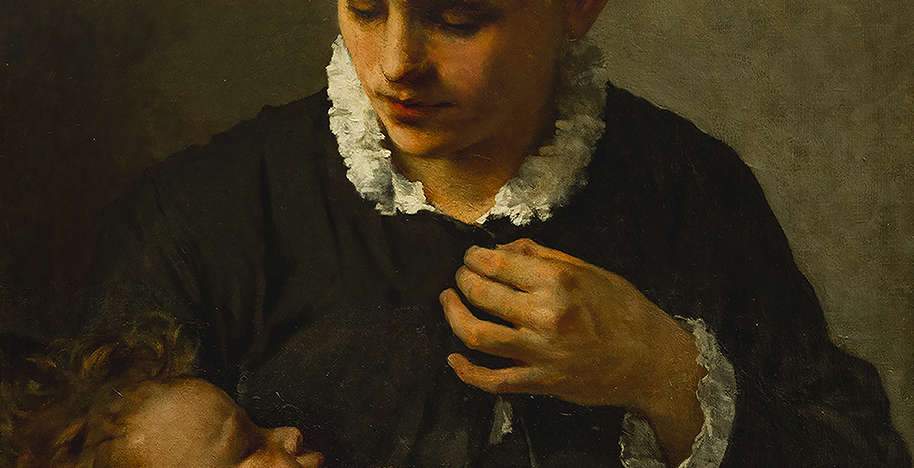From Thursday, November 23, 2023 to Sunday, March 10, 2024, the Bank of Italy is hosting in the representative rooms of its Florence headquarters the exhibition Towards Modernity. Female Presences in the Art Collection of the Bank of Italy.
The initiative aims to acquaint the public with an important nucleus of the Bank’s works, opening the doors of the historic palace on Via dell’Oriuolo to the community. The exhibition further consolidates the path of enhancement of the artistic heritage undertaken by the Bank, in a perspective of social responsibility, in the awareness of the identity value of art testimonies, which represent an extraordinary flywheel for the growth not only cultural of the country. In fact, art is a powerful tool of communication, offering opportunities for meeting, reflection and joy.
The exhibition, curated by Ilaria Sgarbozza and Anna Villari, presents a review of works starting from the era that marked the opening to the public (1871) of the new National Bank Headquarters in Via dell’Oriuolo (since 1893 Banca d’Italia) to the mid-20th century. A review that will allow both to reflect on the long path of women’s emancipation in its different dimensions, civil, economic, cultural and social, and to question and discuss the challenges still open. A topic at the attention of the Bank of Italy, which actively contributes to the study of gender gaps in today’s world of work and professions, starting with the lowest female participation rates and pay gaps, investigating their causes, implications on the growth prospects of our economy, and possible remedies in a context of too slow and partial progress.
Drawing on the collection of the Bank of Italy, the exhibition recounts a cross-section of the founding moment of Italian culture that, after decades of Risorgimento struggles, fought also through the languages of art, painting, music, and poetry, saw the birth of the Kingdom of Italy, with Florence as its civil and cultural capital. It does so by following the transformation of the female portrait between the early1870s and the mid-20th century: from the realist innovations and psychological rendering of the school of Giovanni Fattori, passing through the formal and narrative research of young artists formed in the climate of the avant-garde, to arrive at the languages of the return to order, of new expressive sensibilities, of different classicisms.
Portraits of women and works by women artists, a fascinating series of works that recounts how women, gradually abandoning the domestic and family dimension, determinedly conquered a space of freedom where they could fully assert their intellectual stature. The title “Toward Modernity” traces a direction that is not only chronological but also, and above all, socio-cultural and civilizational.

From being a model, captured mainly in the domestic and family dimension, with some echoes of reassuring rural worlds, the woman gradually emerges as the protagonist of bourgeois or aristocratic fin de siècle society, until she defines her own space of freedom, aware of her seductive power but also of her own, new, social and intellectual role. The itinerary also proposes a focus on five female artists, whose works and biographies-in three cases closely related to Florence-delineate well the female model of the professional artist, which only in the twentieth century can fully express itself. These are the works of Marisa Mori, Florentine, pupil of Felice Casorati and in Florence frequenter of the Futurist circle; Nella Marchesini, also a favorite of Casorati, frequenter in Turin of Piero Gobetti, friend of Natalino Sapegno, Carlo Levi, Federico Chabod, appreciated illustrator and present at Biennales and Quadrennials; by Maryla Lednicka-Szczytt, Polish sculptress in Italy in the 1920s, between Florence and Milan, close to Margherita Sarfatti ’s Novecento group and protected by Giuseppe Toeplitz, an Italian and international banking figure; by Pasquarosa Bertoletti Marcelli, who arrived in Rome at just 16 from Anticoli Corrado, became a painter and successfully exhibited at Secession, Biennial and Quadrennial exhibitions, gaining prominence; of Leonetta Cecchi Pieraccini, a pupil of Fattori, wife of Emilio Cecchi, sister of Gaetano Pieraccini, the first mayor of Florence after the Liberation, at the center of a vital intellectual and artistic world, which she observed with sensitivity and attention and returned through the exercise of painting and writing.
At the beginning of the exhibition itinerary, as a tribute to Florence and to the woman who more than any other represents its cultural roots, it has been chosen to display some precious editions of the Divine Comedy, opened on panels depicting Beatrice: a figure who is indeed “kind” and pitiful, but also enlightened by wisdom and wisdom. Also on display is a painting by Florentine artist Raffaello Sorbi, dated 1863, in which Beatrice, from muse and co-star, gains exemplary visual and narrative centrality.
The exhibition also offers an opportunity to visit the rooms of the Florence Branch of the Bank of Italy normally closed to the public. Through the noble Donatello atrium, ascending the elegant flight of the helicoidal staircase, it is possible to admire the palace’s representative rooms, the halls adorned with stucco, the painted vaults, and the coeval furnishings.
The building itself bears witness to that central period in the history of Florence, and therefore of Italy, in which the concept of nationhood in the modern sense was defined. Built in the Neo-Renaissance style to a design by Antonio Cipolla between 1865 and 1869 (the period when Florence was the capital of Italy), the palace is emblematic of the new “Italian style,” a cultural synthesis of the nascent national unity. In the rich decorative apparatus of the interiors, it is possible to catch reminders of the values of unification.
For all information, you can click here.
 |
| Florence, at the Bank of Italy an exhibition on female presences in art between the 19th and 20th centuries |
Warning: the translation into English of the original Italian article was created using automatic tools. We undertake to review all articles, but we do not guarantee the total absence of inaccuracies in the translation due to the program. You can find the original by clicking on the ITA button. If you find any mistake,please contact us.